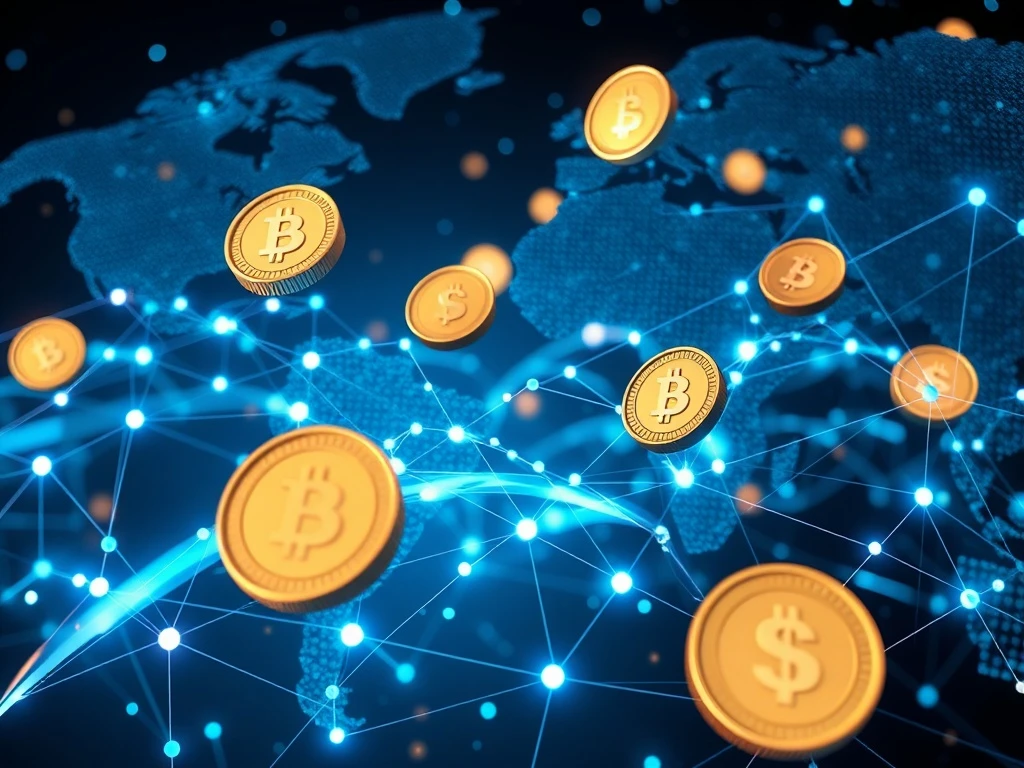Stablecoins Dominate Global Payments With $15.6 Trillion On-Chain Volume in 2024

Stablecoins are no longer just a niche tool for crypto traders—they’re now a $15.6 trillion force reshaping global payments. According to HTX Research, these digital assets are revolutionizing cross-border transactions, trade settlements, and capital flows, offering a faster, cheaper alternative to traditional systems like SWIFT. But how did stablecoins achieve this staggering growth, and what’s next for their role in the financial ecosystem?
How Stablecoins Are Disrupting Global Payments
The HTX Research report reveals that stablecoins processed $15.6 trillion in on-chain volume in 2024, marking a seismic shift in how money moves globally. Here’s why they’re gaining traction:
- Speed: Transactions settle in minutes, not days.
- Cost: Fees are a fraction of traditional banking systems.
- Accessibility: No need for intermediaries like banks.
The Two-Stage Evolution of Stablecoins
The report outlines a clear roadmap for stablecoin adoption:
- Integration with Traditional Finance: Companies like Visa and PayPal are already using stablecoins for cross-border settlements and trade payments.
- Regulatory Clarity: The U.S. SEC’s potential easing of rules for security token offerings (STOs) could unlock tokenized bonds and stocks.
Why Regulatory Frameworks Matter for Stablecoins
From the U.S. GENIUS Act to the EU’s MiCA regulation, clear rules are essential for stablecoins to thrive. Hong Kong’s licensing system is another example of how jurisdictions are preparing for a future where stablecoins anchor the digital economy.
Stablecoins vs. Traditional Payments: A Comparison
| Feature | Stablecoins | Traditional Systems (e.g., SWIFT) |
|---|---|---|
| Speed | Minutes | Days |
| Cost | Low | High |
| Access | Global | Restricted |
The Future of Stablecoins: A Digital Dollar Operating System?
HTX Research suggests stablecoins could become the backbone of a global “digital dollar operating system,” acting as liquidity hubs for on-chain finance. But challenges remain, including environmental concerns and evolving regulations.
FAQs About Stablecoins and Global Payments
1. What are stablecoins?
Stablecoins are cryptocurrencies pegged to stable assets like the U.S. dollar, designed to minimize price volatility.
2. How do stablecoins improve cross-border payments?
They bypass intermediaries, reducing fees and settlement times from days to minutes.
3. Which companies are adopting stablecoins?
Visa, PayPal, and other financial giants are integrating them for settlements and trade payments.
4. What regulatory hurdles do stablecoins face?
Laws like the GENIUS Act and MiCA are shaping how stablecoins can be used in mainstream finance.
5. Can stablecoins replace traditional banking?
Not entirely, but they offer a faster, cheaper alternative for certain transactions.
6. What’s next for stablecoins?
Tokenization of traditional assets like stocks and bonds could be the next frontier.









